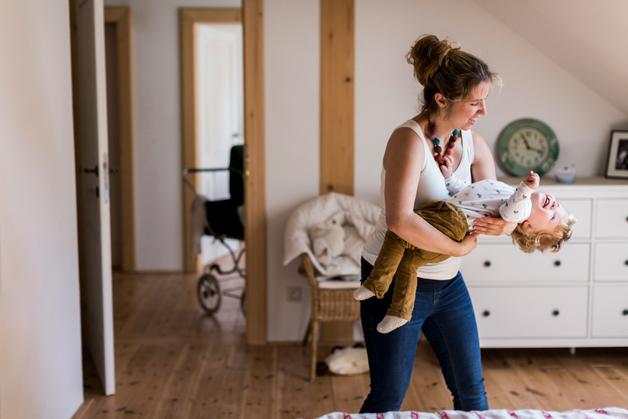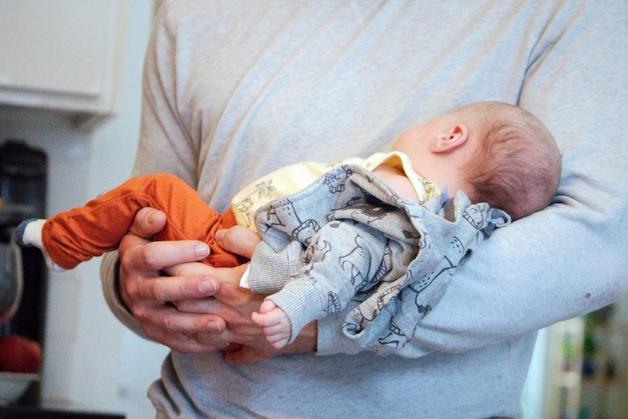Few gestures speak more to our shared need for comfort than gentle rocking. Imagine the subtle sway: a movement older than memory, evoking the security of the womb and the warmth of parental arms. For many parents, daily life is an intricate balance of seeking restful sleep for their child, nurturing emotional security, and finding small windows of calm for themselves. Yet the path is rarely linear—restless nights, bouts of infant fussiness, the exhaustion of self-doubt—how to ease these moments? This is where the benefits of rocking emerge as a powerful, instinctive tool. From soothing newborns to easing adult anxiety, rocking holds intriguing physiological, neurological, and emotional effects, offering not only tradition but evidence-based solutions for families navigating a world of fatigue, overstimulation, and need for reassurance.
Curious about why this age-old gesture can truly make a difference—physically, emotionally, and even cognitively? Explore the benefits of rocking for every age and family situation, with a scientific yet approachable perspective designed to demystify, empower, and invite new, gentle rituals into your routine.
Rocking: A Universal Gesture of Reassurance and Security
Scientific literature and daily experience both affirm the extraordinary universality of rocking. Across cultures, generations, and settings—arms, cradles, chairs—the simple act of back-and-forth movement generates a tangible sense of relaxation and belonging. This is not mere folklore. Rhythmic motion directly activates the vestibular system, which governs balance and spatial orientation. The same system that helps your child stand, walk, and leap safely onto your bed at dawn is being trained when you gently rock them before sleep.
But there’s more. The benefits of rocking are deeply intertwined with the neurological experience of safety. The mimicking of intrauterine motion, the nurturing lap, the rhythmic hum—they all contribute to a child’s emotional attachment and trust. Notice the settling of lashes, the steadying of breath, the unclenching of tiny anxious fists. These little signs underscore how rocking mediates internal states, both neurological and emotional, eliminating much of the ambient stress that disrupts parent-child connection.
The Science of Soothing: How Rocking Shapes Infant and Child Development
What truly happens in those quiet pre-sleep moments? The repetitive, predictable sway of rocking stimulates the inner ear’s sensory apparatus and, by extension, the maturing brain. Scientific studies show measurable improvements in neurological development—not just balance, but body awareness and physical security in space. Even for particularly fussy or colicky infants, the benefits of rocking include more organized sleep cycles and reduced physiological stress, supported by endorphin release (the body’s own calming “feel-good” chemicals).
- Vestibular stimulation: Rocking exercises and trains this vital network, accelerating adaptation to gravity, spatial cues, and coordinated movement.
- Sleep regulation: Gentle motion synchronizes brain wave patterns with natural, restorative sleep cycles, encouraging both timely sleep onset and sustained, deeper rest.
- Attachment strengthening: Repetitive touch and motion produce oxytocin—a hormone integral to bonding and the reduction of cortisol, the body’s main stress hormone.
For toddlers and older children, these patterns enable improved focus and attention in learning environments. Parents often remark, with surprise, how the shift from restlessness to relaxation seems almost automatic with consistent rocking—yet it is, at its core, a profound biological response.
Beyond Infancy: Why Rocking Supports Wellbeing at Every Age
Rocking for Parents and Adults: More Than Nostalgia
Do you find yourself unconsciously tapping your foot, swaying to calming music, or seeking a quiet moment in a rocking chair after an anxious day? These actions are not arbitrary. The benefits of rocking extend seamlessly into adulthood. Each gentle sway triggers parasympathetic nervous system activity—essentially, your internal de-stress switch.
- Reduction of stress and pain: Endorphin release, improved circulation, and a meditative, mindful focus induced by rhythmic motion collectively soothe knotted muscles and racing thoughts.
- Restorative sleep: Research points to enhanced sleep quality when rocking forms part of a pre-sleep ritual, with decreased awakenings and smoother transitions between sleep cycles.
- Enhanced emotional regulation: Rocking helps in processing strong emotions, making it an excellent adjunct for anyone experiencing mood fluctuations or navigating periods of burnout.
Rocking for Seniors: Gentle Activation and Comfort
For older adults—including those living with neurocognitive disorders such as Alzheimer’s or Parkinson’s—rocking is far more than an affectionate memory. The benefits of rocking now play a therapeutic role:
- Reduction in agitation and confusion: The predictability of rhythmic movement can reduce anxiety, diminish feelings of disorientation, and foster presence in the moment.
- Pain relief and muscle activation: Regular rocking subtly enhances joint flexibility and supports gentle muscle work, especially beneficial when traditional exercise is unrealistic.
- Psychological reassurance: The associations of being cared for and anchored to the present moment offer a grounding antidote to loneliness, restlessness, or sensory overwhelm.
Clinical studies have even highlighted how rocking in therapeutic contexts can ease agitation, regulate mood, and support cognitive flow—a state of focused, calm attention.
Emotional and Psychological Dimensions: The Power of Touch, Rhythm, and Human Connection
Is there any gesture more archetypal than a parent humming a lullaby, swaying in the hush of dusk, with their child pressed close? The benefits of rocking reach straight into the core of emotional wellbeing. The nervous system finds solace in gentle repetition—heart rate slows, stress hormones abate, and emotional storms give way to tranquility.
This is not imagination: rocking is associated with higher levels of endorphins—the natural pain-relieving, mood-elevating substances your brain produces during enjoyable activities. It is why a burdened mind, young or old, often finds release in rhythmic motion.
- Coping with overwhelming feelings: Rocking serves as a sensory “reset,” especially effective for children with ADHD, autism spectrum conditions, or other sensory processing challenges.
- Safe harbor in anxiety: Trauma-informed therapy frequently incorporates rocking for its reliable effect on hyperarousal, insomnia, and emotional regulation. Movement can restore a sense of anchoring during emotionally turbulent times.
Music, Language, and Sensory Integration: Multiplying the Benefits
Consider how often the ritual of rocking is embedded within another—singing, storytelling, or simply the background hum of gentle white noise. Simultaneous activation of auditory and movement pathways amplifies the benefits of rocking, transforming bedtime turbulence into multi-sensory relaxation.
- Lullabies and white noise: Soft music or soothing noises further entrain the brain’s electrical activity, helping synchronize sleep cycles and support relaxation.
- Storytelling and secure attachment: Gentle whispers or familiar stories during rocking foster emotional literacy, enhance trust, and build verbal competency in a nurturing context.
The result? A brain and body fully supported across multiple sensory domains—vestibular, auditory, tactile—offering a holistic mechanism for calming and learning that is far greater than any single modality.
Therapeutic and Adaptive Use: Rocking in Modern Healthcare
Modern medicine is rediscovering the benefits of rocking for individuals facing complex challenges. Occupational therapists increasingly recommend adaptive rocking devices for children and adults who need help in self-regulation.
- Trauma recovery: Rocking gently supports post-traumatic stress recovery, reducing nervous agitation and encouraging emotional safety.
- Neurocognitive support: In dementia or developmental delay, predictable motion can counteract agitation, relieve pain, and contribute to better daily rhythms.
- Sensory integration: Families raising children with autism or ADHD frequently see marked improvement in attention, calmness, and focus when consistent rocking practices are incorporated.
Sustainability and Everyday Mindfulness: Creating New Traditions
Families are increasingly searching for wellness strategies that feel both grounding and eco-conscious. The benefits of rocking here are twofold: the psychological boon and the tangible commitment to sustainability.
- Sustainable materials: Many manufacturers produce rockers from environmentally friendly sources such as FSC-certified wood or bamboo, supporting both planet and artisan.
- Mindful rituals: Integrating rocking into morning routines, pre-nap wind-downs, or quiet evening moments encourages not only relaxation but also emotional attunement and resilience.
Creating these moments doesn’t have to feel like yet another task on the parental to-do list. Small, tailored adjustments—adjusting posture, selecting appropriate speed, pairing with favored songs—can transform mundane routines into acts of self- and family-care.
Rocking as Symbol and Metaphor: Cultivating Connection, Redefining Hope
Language itself immortalizes the act: to “rock” a child, to be a “rock of support,” to “rock away” one’s worries. Common phrases echo the metaphorical benefits of rocking—gentleness, adaptability, safe passage through life’s emotional waves.
For many parents, certain realities crash against hopeful illusions, particularly in moments of parental fatigue or disappointment. Recognizing, and gently letting go of, unsustainable expectations is an important step. Rocking can represent—not the erasure of challenge—but a practice of returning, again and again, to calm presence and acceptance.
Practical Strategies: Making Rocking a Safe and Meaningful Part of Daily Life
- Always choose sturdy, age-appropriate equipment and supervise as needed, especially for infants or frail seniors.
- Incorporate rocking into predictable routines: as a wind-down before naps, a mindful interlude amidst daily chaos, or a cherished close to evening togetherness.
- Maintain an ergonomic posture—relaxed shoulders, feet supported, back upright—to avoid physical strain.
- Tailor the tempo and duration of rocking to an individual’s comfort and responsiveness.
- Keep the surrounding space free from hazards and distractions.
- Enhance sensory experience with gentle, familiar music or voice, especially for children with heightened sensory needs.
- Encourage older adults to participate in low-impact rocking exercises for circulatory health and comfort.
Subtle and flexible, these strategies equip families to personalize their approach and amplify the daily benefits of rocking for every member.
Key Takeaways
- The benefits of rocking span a spectrum of physical, emotional, and cognitive wellbeing for infants, adults, and elders alike—rooted in both ancient practice and modern science.
- Therapeutic rocking strengthens emotional attachment, regulates stress, and fosters restorative sleep through complex neurological pathways.
- The positive effects extend beyond sleep support: helping regulate the sensory system, offering gentle pain relief, and building emotional resilience in the face of modern family pressures.
- Integrating rocking mindfully provides not only individual comfort but also sustainable, environmentally conscious daily rituals.
- Families may encounter obstacles, but expert resources are available—professional caregivers and evidence-based strategies, as well as digital tools like the Heloa app, which offers personalized advice and free health questionnaires for your child.
- Rocking—whether a practiced bedtime tradition or a moment of calm after a taxing day—remains a simple, adaptable, and science-backed pathway toward harmony, connection, and resilience across generations.
Questions Parents Ask
Can rocking help with colic in babies?
It’s completely understandable to feel a bit helpless during bouts of colic. Rocking is often appreciated as a comforting way to help soothe a baby experiencing discomfort. The rhythmic movement can relax your infant and potentially ease crying episodes, offering both emotional reassurance and physical comfort. While it may ne pas always stop colic entirely, many parents find that consistent, gentle rocking gives both child and caregiver some precious moments of calm during otherwise trying times.
Is rocking safe for all ages, including newborns and seniors?
Rassurez-vous, rocking—when done thoughtfully—can be adapted for nearly every stage of life. For newborns, gentle motion in a suitable rocker or in your arms, under supervision, supports bonding and a sense of security. As children grow, rocking continues to bring relaxation and comfort. For seniors, especially those with reduced mobility, gentle rocking in a supportive chair is not only safe but can aid in maintaining joint flexibility and reducing feelings of restlessness. Always make sure activities are age-appropriate and that the environment is secure to avoid any risk of falls.
Can rocking be beneficial for children with sensory processing challenges?
Yes, rocking is often recommended as part of sensory regulation strategies. The repetitive, predictable motion helps provide calming input for children who experience heightened sensory sensitivity, such as those with autism or other processing differences. Families frequently notice improvements in calmness, focus, and even emotional resilience when rocking becomes a regular, supportive routine. N’hésitez pas à adapter le rythme et la durée selon les besoins de votre enfant pour que ces moments restent agréables et apaisants pour tous.










